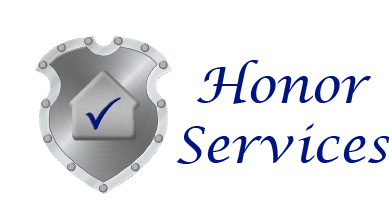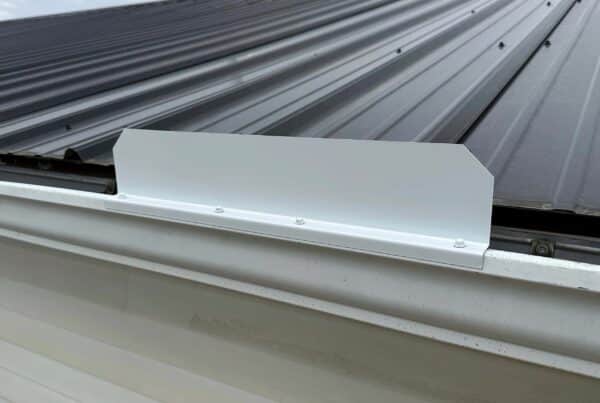
Are you concerned about the potential damage water intrusion can cause to your property? This silent menace can creep into your home or building, causing extensive damage before you even realize there’s a problem. Understanding the risks, signs, and proper prevention is critical to maintaining the value, safety, and integrity of your investment.
In the sections below, we’ll go through the most common causes and signs of water intrusion. Beyond that, we’ll also cover expert tips and strategies to help you stay one step ahead of the problem. By the time we wrap up, you’ll have a keen eye for the red flags and when it’s time to act.
Understanding Water Intrusion
Water intrusion happens when water finds its way into your home or building through leaks, cracks, or other openings. This infiltration can come from various sources, such as rain, flooding, and plumbing problems.
One common entry point for water is the roof. A damaged or aging roof can allow water to seep in during heavy rainfall or snowmelt, causing harm to the attic, ceilings, and walls. Clogged gutters and downspouts can also cause water to overflow and pool around the foundation, potentially leading to water intrusion in the basement or crawl space.
Water can also enter through walls, especially if there are cracks, gaps, or deteriorating seals around windows and doors. These openings can grow over time, allowing more water to penetrate the structure and damage insulation, drywall, and framing.
Plumbing leaks from broken pipes, leaking appliances, and faulty fixtures can introduce water into hidden areas like behind walls or under floors. If not addressed promptly, these leaks can cause extensive damage and create an ideal environment for mold growth.

Recognizing the Signs of Water Intrusion
Identifying water intrusion early is essential to minimizing damage and preventing more serious issues from developing. By familiarizing yourself with the common signs of water intrusion, you can take swift action to address the problem before it escalates.
Visible Signs
- Water stains on walls, ceilings, or floors (brownish or yellowish discolorations)
- Mold or mildew growth
- Peeling paint or wallpaper (bubbling, cracking, or separating from the surface)
If you notice any of these visible signs, it’s crucial to investigate the source of the water and take appropriate action.
Less Obvious Signs
- Musty odors
- Increased humidity levels
- Unexplained spikes in water bills
If you detect a musty smell, consistently damp or muggy air, or suddenly higher water bills without a clear reason, it could point to a hidden water leak or intrusion issue.
Proactive Monitoring
To catch water intrusion early, perform regular inspections of your property. Look for signs of moisture, leaks, or damage, focusing on areas prone to water intrusion. Typically, this includes areas like the roof, basement, and areas surrounding plumbing fixtures.
The Risks of Ignoring Water Intrusion
Failing to address water intrusion promptly can lead to a host of serious consequences that can impact your property’s structural integrity, your health, and your wallet. Understanding these risks is crucial in motivating you to take swift action when signs of water intrusion appear.
Structural Damage
One of the most significant risks of ignoring these problems is the potential for severe structural damage. When water seeps into your home or building, it can weaken essential components like the foundation, walls, floors, and support beams.
Over time, this continued exposure to moisture can cause these elements to deteriorate, compromising the stability and safety of your property. In extreme cases, neglected water intrusion can even lead to catastrophic failures like collapsing walls or caving floors.
Health Hazards
Water intrusion creates an ideal environment for mold and mildew growth, which can pose serious health risks to you and your family. Mold exposure can cause a range of symptoms, including:
- Respiratory issues
- Allergic reactions
- Headaches
- Skin irritation
For individuals with pre-existing health conditions or weakened immune systems, the consequences of mold exposure can be even more severe. Addressing water intrusion early is essential to prevent the growth and spread of these harmful fungi.
Financial Burden
Ignoring water intrusion can also have a significant impact on your finances. The longer you allow water to infiltrate your property, the more extensive the damage will become, leading to costlier repairs. In addition to repairing structural damage, you may also face expenses related to:
- Mold remediation
- Replacing damaged belongings
- Increased energy bills due to compromised insulation
Furthermore, if you decide to sell your property, unaddressed issues can significantly lower its value or even make it unsellable until costly repairs are made.

Preventative Maintenance
Taking proactive steps to prevent water intrusion is far more cost-effective and less stressful than dealing with the damage!
Routine maintenance is crucial for identifying and addressing potential issues before they lead to more serious problems. This includes cleaning gutters and downspouts, inspecting the roof for damage or leaks, and checking caulking and weatherstripping around windows and doors.
In addition to regular upkeep, making strategic improvements to your property can provide an extra layer of protection against water intrusion. Installing proper drainage systems, waterproofing your basement, and upgrading your roof to a more durable, water-resistant material are effective upgrades to consider. While these improvements may require an initial investment, they can pay off in the long run by preventing costly water damage repairs.
Moreover, leaks from plumbing and irrigation systems can be a significant source of water intrusion. To minimize this risk, inspect pipes regularly for leaks or corrosion, check appliances and fixtures for proper functioning and signs of water damage, monitor your water bill for unexpected increases, and ensure your irrigation system is properly maintained and not spraying water onto your foundation or exterior walls.
When to Call a Professional
If you notice signs of water intrusion, such as water stains, mold growth, or musty odors, acting quickly is crucial. Specialists have the expertise to assess the situation, identify the source, and develop an effective plan to address it.
In case of a plumbing emergency, shut off the main water supply and call a licensed plumber immediately. They can diagnose the problem, make necessary repairs, and ensure your plumbing system functions correctly to prevent future occurrences.
If you suspect structural damage due to water intrusion, consult a structural engineer or building professional. They can assess the extent of the damage and recommend appropriate repairs to maintain your property’s integrity and safety.
For significant mold growth, contact a mold specialist. They have the expertise to safely and effectively remove mold while addressing the underlying moisture issues to prevent its return.
Conclusion
Water intrusion can be a silent threat, but its consequences tend to be loud and clear. When you understand the risks, signs, and prevention necessary, you save a lot of stress and time. Regular maintenance, strategic improvements, and a watchful eye can go a long way in keeping water intrusion at bay.
However, when faced with significant water damage, structural issues, or mold growth, it’s essential to know when to call in the professionals. To schedule an in-depth inspection of your home or get expert guidance, reach out to Honor Services in Melbourne, FL, and surrounding areas.



